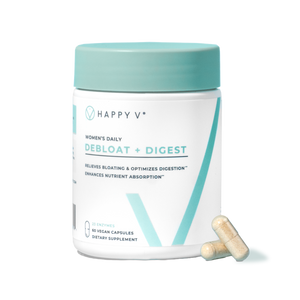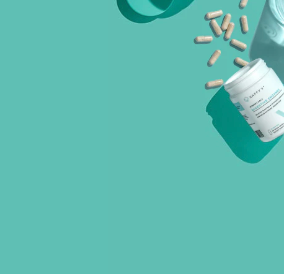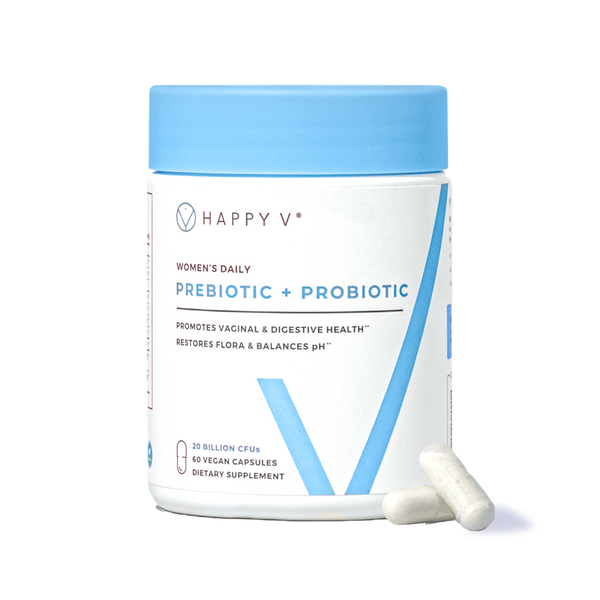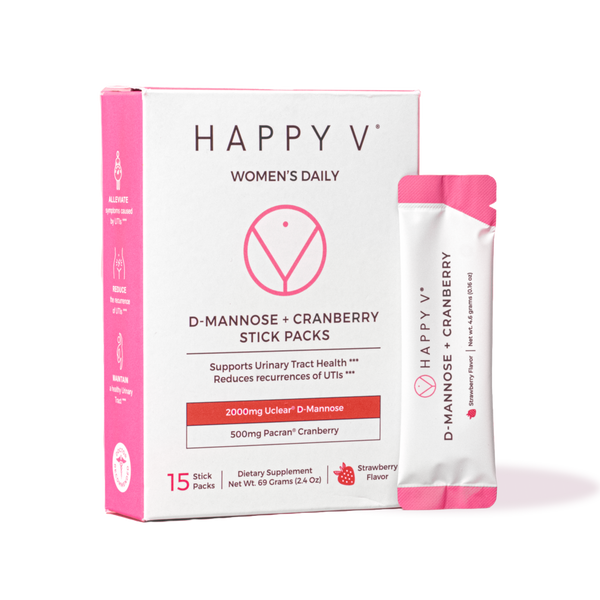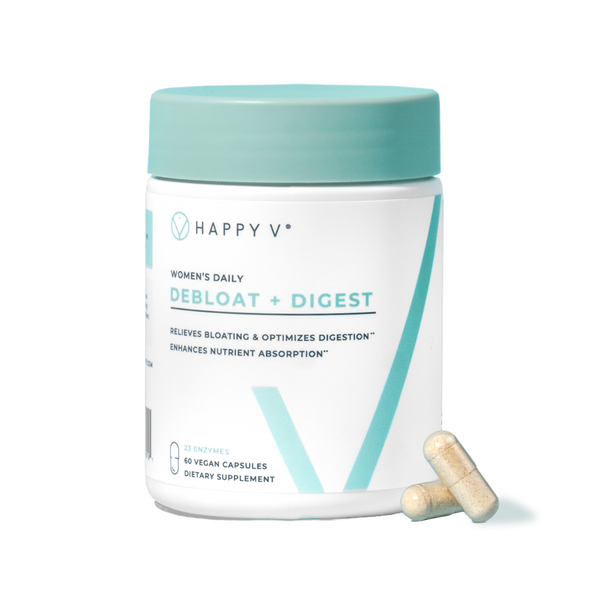- Fact Checked
- November 18, 2025
- 5 min read
Yeast Infections During Pregnancy: What You Need to Know
Table of Contents
Table of Contents
Pregnancy is amazing, but let’s be honest, it’s also a time when your body does some… pretty unexpected things. One common surprise? A yeast infection during pregnancy. Thanks to hormonal shifts, increased estrogen levels, and extra vaginal sugars, Candida albicans (the #1 cause of yeast infections) can multiply faster than usual. Luckily, vaginal yeast infections are common, treatable, and usually harmless for baby1, especially when you know what to look for, how to treat them safely, and how to prevent them from coming back.
This post is for informational purposes only and does not constitute medical advice. See full disclaimer below.
Why Yeast Infections Are More Common During Pregnancy?
Nausea, sore breasts, and yeast infections. All are common during pregnancy. In fact, according to the Centers for Disease Prevention and Control (CDC) and Mayo Clinic, up to 1 in 4 pregnant women will deal with a yeast infection at some point before delivery. Here’s why:
- Hormonal changes (especially higher estrogen levels) shift your vaginal pH2
- Your vaginal secretions may contain more glucose, which feeds Candida3
- A naturally damp, warm genital area plus extra discharge = a cozy home for yeast
- Your immune system naturally changes to protect your growing baby, which sometimes gives yeast an opening to thrive4
Symptoms of a Yeast Infection While Pregnant
Most of the time, the symptoms of a yeast infection during pregnancy are the same as any other time. These include:
- Vaginal itching or irritation around the vulva5
- Redness and swelling6
- Burning when you pee or during sex
- Thick white discharge that looks like cottage cheese
It’s important to remember these can overlap with signs of other vaginal infections like bacterial vaginosis, sexually transmitted infections, or even a UTI. Any symptoms of any kind of infection, especially during pregnancy, need to be checked by your OBGYN so they can confirm diagnosis before beginning any treatment.
Also important to remember: even if you experienced vaginal infections prior to pregnancy, your go-to treatment options may not be safe while pregnant. Always talk to a doctor before beginning any new treatment, even if it’s “natural”.
What Happens If You Leave A Yeast Infection Untreated?
Yeast infections themselves don’t usually harm your baby, but they can get worse if ignored, making things more uncomfortable for you with:
- More severe itching and burning
- Skin irritation or tiny tears in the vulva area
- Rarely, extra fatigue, digestive issues, or oral thrush (if passed to your newborn during vaginal delivery)
That’s why it’s always best to see your OBGYN at the first sign of symptoms, so you can get help tackling them quickly.
Safe Treatment Options for Yeast Infections During Pregnancy
The best person to confirm a yeast infection diagnosis and prescribe a pregnancy-safe treatment option is your OBGYN. They will likely recommend an over-the-counter antifungal like miconazole (like Monistat) or clotrimazole. Terconazole is another option sometimes used with your doctor’s guidance.
While some OTC treatments last 1-5 days, a seven-day treatment is often suggested for pregnant women because it’s a lower dose over a longer time—safer for you and baby.
Fluconazole (Diflucan) or other oral medications are generally not recommended during pregnancy, especially in the first trimester, due to rare risks of birth defects.
Never start any treatment—even over-the-counter—without checking with your provider first.
Tips for Comfort & Prevention
While some yeast infection triggers can’t be avoided (hello, pregnancy hormones!), a few everyday habits can help reduce your risk of recurrence and keep you comfortable. These include:
- Wearing cotton underwear and loose-fitting clothes to stay dry.
- Changing out of wet swimsuits or sweaty workout gear ASAP.
- Avoiding douching, scented wipes, and bubble baths that disrupt your lactobacillus balance.
- Using unscented sanitary pads instead of tampons during treatment.
- Keeping blood sugar stable, especially if you have gestational diabetes.
- Include yogurt with live cultures or a trusted probiotic (always confirm with your OBGYN) to support your good bacteria.
How Probiotics Can Help Support Vaginal Health During Pregnancy
Even with the best antifungal treatment, pregnancy hormones can keep things interesting for your microbiome. That’s where daily probiotics come in.
Probiotics containing Lactobacillus strains help maintain a healthy balance of good bacteria7, making it harder for Candida to overgrow in the first place. This can be especially helpful if you’ve needed antibiotics, have frequent yeast infections, or just want extra support during all the changes that come with pregnancy.
Happy V’s Prebiotic + Probiotic is formulated with clinically studied strains like Lactobacillus acidophilus LA-14® and Lactobacillus rhamnosus HN001™, which are shown to support a healthy vaginal microbiome. In preclinical research, the Happy V blend even helped keep Candida growth in check and discouraged Gardnerella vaginalis overgrowth (a common cause of bacterial vaginosis).
Of course, always talk to your OBGYN or healthcare provider before adding any supplements during pregnancy.
Final Thoughts
A yeast infection during pregnancy can feel like yet another thing on your never-ending to-do list, but it’s one you can tackle safely. The best over-the-counter options, like miconazole, clotrimazole, and gentle vaginal suppositories, work well when used as directed by your doctor.
Focus on simple prevention habits, stay mindful of your vaginal health, and trust your OBGYN to guide you. Your vagina—and your growing baby—deserve nothing less than smart, gentle, science-backed care.
Keep the Conversation Going
-
Visit our blog for more on yeast infections and women’s health tips.
- Join our private Happy V Facebook group to hear from others who've been there.
- Explore supplements designed to support your vaginal health journey.
Disclaimer: This blog is for informational and educational purposes only and is not intended to diagnose, treat, cure, or prevent any disease. Statements about supplements have not been evaluated by the Food and Drug Administration. For more information about vaginal infections, visit the CDC or speak to a licensed healthcare provider.

